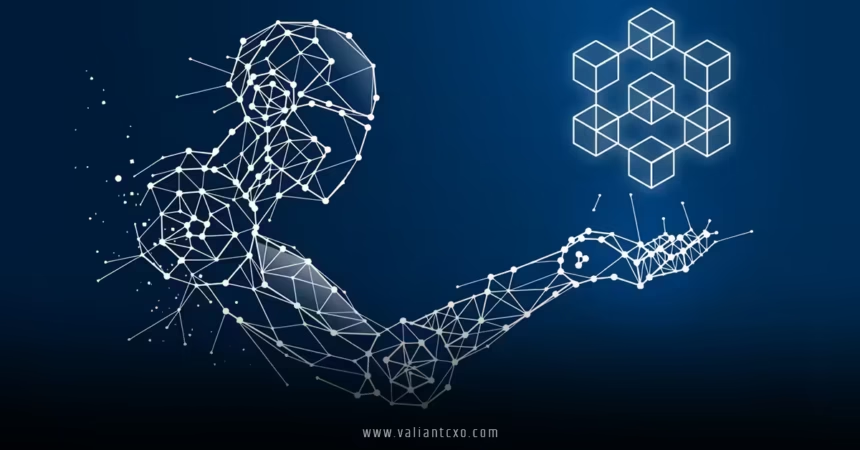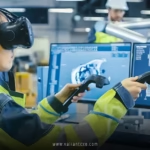Blockchain and AI integration is transforming the way we think about technology, merging two powerhouse innovations to create systems that are secure, intelligent, and efficient. Imagine a world where data is not only tamper-proof but also smart enough to make decisions on its own. That’s the promise of combining blockchain’s decentralized ledger with AI’s predictive and analytical prowess. In this article, we’ll dive deep into what blockchain and AI integration means, why it’s a game-changer, and how it’s already reshaping industries. Buckle up—this is going to be an exciting ride!
What Is Blockchain and AI Integration?
At its core, blockchain and AI integration is the marriage of two cutting-edge technologies: blockchain, a decentralized and immutable ledger, and artificial intelligence, the brain behind data analysis and automation. Blockchain ensures data is secure, transparent, and unchangeable, while AI processes that data to uncover patterns, make predictions, or automate tasks. Together, they create a system that’s both trustworthy and intelligent.
Think of it like a high-tech vault with a genius librarian. The vault (blockchain) keeps everything safe and unalterable, while the librarian (AI) organizes, analyzes, and pulls insights from the contents at lightning speed. This synergy is why blockchain and AI integration is sparking excitement across industries like finance, healthcare, and supply chain management.
Why Combine Blockchain and AI?
Why bring these two tech giants together? The answer lies in their complementary strengths. Blockchain offers trust through decentralization—no single entity controls the data, and every transaction is verifiable. AI, on the other hand, thrives on data, using it to train models and make decisions. By integrating them, you get a system where AI can analyze blockchain’s secure data without worrying about tampering or bias.
For example, in a supply chain, blockchain can track every step of a product’s journey—from factory to store—while AI predicts demand or spots inefficiencies. The result? A transparent, optimized process that saves time and money. Blockchain and AI integration solves real-world problems by combining trust with intelligence.
The Benefits of Blockchain and AI Integration
Blockchain and AI integration isn’t just a buzzword; it’s a powerhouse with tangible benefits. Let’s break down why this combo is so powerful.
Enhanced Security and Trust
Blockchain’s decentralized nature makes it nearly impossible to hack or alter data. When you add AI’s ability to detect anomalies or suspicious patterns, you get a security system that’s both proactive and ironclad. For instance, in finance, blockchain and AI integration can secure transactions while AI monitors for fraud in real-time. It’s like having a guard dog that not only barks at intruders but also predicts when they might show up.
Improved Data Integrity
AI needs clean, reliable data to function effectively. Blockchain ensures that data is accurate and untampered, giving AI a solid foundation to work with. This is crucial in fields like healthcare, where blockchain and AI integration can ensure patient records are secure and accurate while AI analyzes them for better diagnoses or treatment plans.
Automation and Efficiency
AI thrives on automation, and blockchain provides a transparent platform for it. Together, they can streamline processes like smart contracts—self-executing agreements stored on the blockchain. AI can analyze contract conditions and trigger actions, like releasing payments, without human intervention. This cuts costs and speeds up operations, making blockchain and AI integration a no-brainer for businesses.
Decentralized Intelligence
Centralized AI systems can be vulnerable to manipulation or bias. By running AI algorithms on a blockchain, you distribute the processing across a network, reducing the risk of a single point of failure. This decentralized intelligence ensures fairness and transparency, especially in applications like voting systems or predictive analytics.
Real-World Applications of Blockchain and AI Integration
Blockchain and AI integration isn’t just theoretical—it’s already making waves across industries. Here are some exciting ways it’s being used today.
Healthcare: Secure and Smart Patient Care
In healthcare, blockchain and AI integration is revolutionizing patient data management. Blockchain securely stores medical records, ensuring they’re tamper-proof and accessible only to authorized parties. AI analyzes this data to predict health risks, recommend treatments, or even assist in drug discovery. For example, a hospital could use blockchain to store patient histories while AI identifies patterns to catch diseases early. This combo saves lives and protects privacy.
Finance: Smarter Transactions
The financial sector is a hotbed for blockchain and AI integration. Blockchain enables secure, transparent transactions, like cryptocurrencies or cross-border payments. AI steps in to analyze market trends, detect fraud, or automate trading. Imagine a world where your bank uses blockchain to secure your transactions and AI to warn you about suspicious activity before it happens. That’s the power of this integration.
Supply Chain: Transparency Meets Efficiency
Supply chains are complex, with multiple stakeholders and endless opportunities for error. Blockchain and AI integration simplifies this by tracking goods on a transparent ledger while AI optimizes logistics. For instance, blockchain can verify the authenticity of luxury goods, while AI predicts shipping delays or optimizes routes. This ensures products reach customers faster and with full transparency.
Voting Systems: Fair and Fraud-Proof
Elections are ripe for disruption with blockchain and AI integration. Blockchain creates a tamper-proof record of votes, ensuring transparency and security. AI can analyze voting patterns to detect fraud or predict turnout, making elections more reliable. Could this be the key to restoring trust in democratic processes? It’s certainly a step in the right direction.
Challenges of Blockchain and AI Integration
No technology is perfect, and blockchain and AI integration has its hurdles. Let’s explore some challenges and how they’re being addressed.
Scalability Issues
Blockchain networks, like Ethereum, can be slow and resource-intensive. Adding AI’s computational demands can strain systems further. However, advancements like layer-2 solutions and more efficient AI algorithms are helping overcome these bottlenecks. The future of blockchain and AI integration depends on scalable infrastructure.
High Costs
Implementing blockchain and AI integration can be expensive, especially for small businesses. Blockchain requires significant computing power, and AI needs robust hardware for training models. But as cloud computing and open-source tools become more accessible, costs are coming down, making this tech more attainable.
Regulatory Uncertainty
Both blockchain and AI face regulatory scrutiny. Governments are still figuring out how to regulate decentralized systems and AI ethics. For blockchain and AI integration to thrive, clear regulations are needed to ensure compliance without stifling innovation. Industry leaders are working with policymakers to find a balance.
Data Privacy Concerns
While blockchain ensures data integrity, AI’s data-hungry nature raises privacy concerns. How do you balance AI’s need for data with user privacy? Solutions like federated learning—where AI trains on decentralized data without sharing it—are emerging to address this issue, making blockchain and AI integration more privacy-friendly.
The Future of Blockchain and AI Integration
What does the future hold for blockchain and AI integration? The possibilities are endless. As blockchain networks become faster and AI algorithms more efficient, we’ll see this integration permeate everyday life. Picture smart cities where blockchain secures IoT devices, and AI optimizes traffic flow. Or imagine personalized education platforms where blockchain verifies credentials, and AI tailors learning paths.
The rise of decentralized autonomous organizations (DAOs) powered by blockchain and AI integration is another exciting prospect. These organizations could use AI to make decisions and blockchain to ensure transparency, creating a new model for governance. The question isn’t whether blockchain and AI integration will shape the future—it’s how quickly it’ll happen.
Emerging Trends to Watch
Keep an eye on trends like decentralized AI marketplaces, where developers share AI models on blockchain platforms, ensuring fair compensation and transparency. Another trend is the use of blockchain and AI integration in climate tech, where blockchain tracks carbon credits, and AI optimizes energy usage. These innovations show the versatility of this tech duo.
How to Get Started with Blockchain and AI Integration
Ready to dive into blockchain and AI integration? Here’s a beginner-friendly roadmap to get you started.
Learn the Basics
Start by understanding blockchain and AI individually. Resources like CoinDesk offer great insights into blockchain, while MIT Technology Review covers AI advancements. Familiarize yourself with terms like smart contracts, machine learning, and decentralization.
Explore Tools and Platforms
Experiment with platforms like Ethereum for blockchain development and TensorFlow for AI. Tools like IBM’s Watson or Hyperledger are great for exploring blockchain and AI integration. Many of these platforms offer free tutorials to help you get hands-on experience.
Join Communities
Connect with experts and enthusiasts through communities like Reddit’s r/Blockchain or AI-focused forums. These spaces are goldmines for learning about real-world applications and networking with professionals in blockchain and AI integration.
Start Small
You don’t need to build a global platform overnight. Start with a small project, like a blockchain-based voting app with AI-driven analytics. Experiment, fail, and learn—it’s the best way to master blockchain and AI integration.
Conclusion
Blockchain and AI integration is more than a tech trend—it’s a revolution that’s reshaping industries, from healthcare to finance to supply chains. By combining blockchain’s security with AI’s intelligence, we’re unlocking a future where systems are transparent, efficient, and smart. Despite challenges like scalability and regulation, the potential of blockchain and AI integration is undeniable. Whether you’re a business owner, developer, or curious beginner, now’s the time to explore this dynamic duo. The question is: are you ready to be part of the future?
FAQs
1. What is blockchain and AI integration, and why does it matter?
Blockchain and AI integration combines blockchain’s secure, decentralized ledger with AI’s data analysis capabilities. It matters because it creates trustworthy, intelligent systems that can transform industries like healthcare and finance.
2. How does blockchain and AI integration improve security?
Blockchain ensures data is tamper-proof, while AI detects anomalies or threats in real-time. Together, they create robust security systems, like fraud detection in financial transactions.
3. What industries benefit most from blockchain and AI integration?
Healthcare, finance, supply chain, and voting systems are among the top beneficiaries. Blockchain and AI integration enhances transparency, efficiency, and decision-making in these sectors.
4. Are there any risks to blockchain and AI integration?
Yes, challenges include scalability, high costs, regulatory uncertainty, and privacy concerns. However, advancements like layer-2 solutions and federated learning are addressing these issues.
5. How can beginners learn about blockchain and AI integration?
Start with online resources, experiment with platforms like Ethereum and TensorFlow, and join communities on Reddit or other forums to connect with experts in blockchain and AI integration.
For More Updates !! : valiantcxo.com


